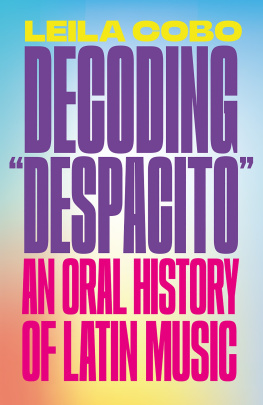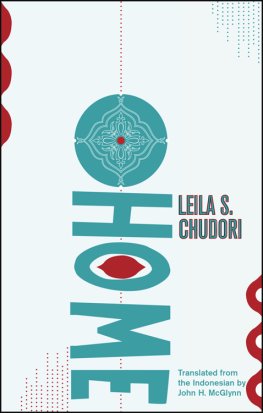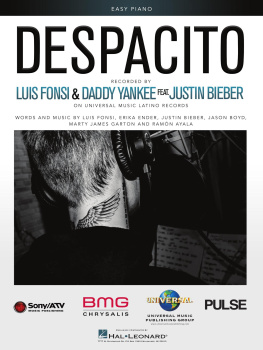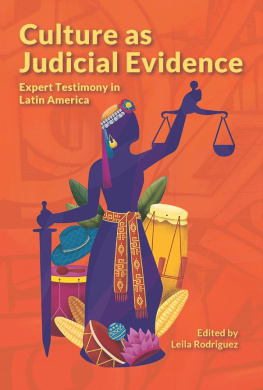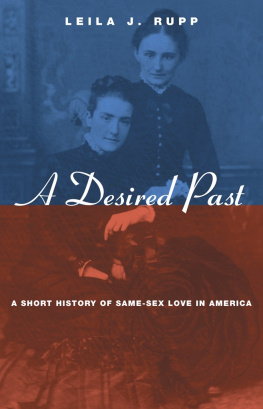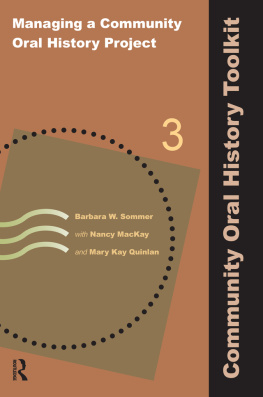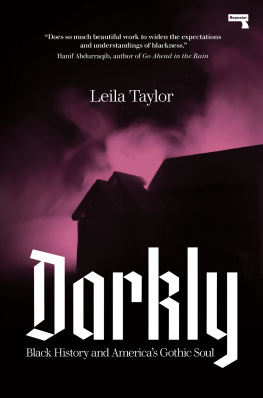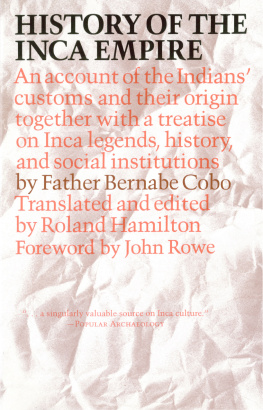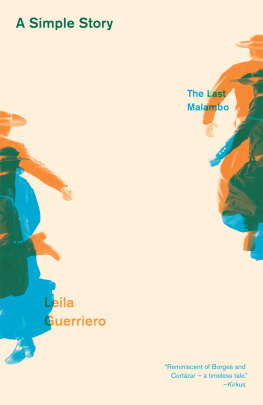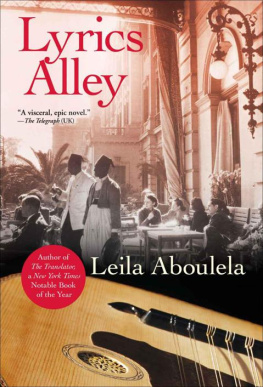Leila Cobo - Decoding Despacito: An Oral History of Latin Music
Here you can read online Leila Cobo - Decoding Despacito: An Oral History of Latin Music full text of the book (entire story) in english for free. Download pdf and epub, get meaning, cover and reviews about this ebook. year: 2021, publisher: Knopf Doubleday Publishing Group, genre: Non-fiction. Description of the work, (preface) as well as reviews are available. Best literature library LitArk.com created for fans of good reading and offers a wide selection of genres:
Romance novel
Science fiction
Adventure
Detective
Science
History
Home and family
Prose
Art
Politics
Computer
Non-fiction
Religion
Business
Children
Humor
Choose a favorite category and find really read worthwhile books. Enjoy immersion in the world of imagination, feel the emotions of the characters or learn something new for yourself, make an fascinating discovery.
- Book:Decoding Despacito: An Oral History of Latin Music
- Author:
- Publisher:Knopf Doubleday Publishing Group
- Genre:
- Year:2021
- Rating:5 / 5
- Favourites:Add to favourites
- Your mark:
- 100
- 1
- 2
- 3
- 4
- 5
Decoding Despacito: An Oral History of Latin Music: summary, description and annotation
We offer to read an annotation, description, summary or preface (depends on what the author of the book "Decoding Despacito: An Oral History of Latin Music" wrote himself). If you haven't found the necessary information about the book — write in the comments, we will try to find it.
Leila Cobo: author's other books
Who wrote Decoding Despacito: An Oral History of Latin Music? Find out the surname, the name of the author of the book and a list of all author's works by series.
Decoding Despacito: An Oral History of Latin Music — read online for free the complete book (whole text) full work
Below is the text of the book, divided by pages. System saving the place of the last page read, allows you to conveniently read the book "Decoding Despacito: An Oral History of Latin Music" online for free, without having to search again every time where you left off. Put a bookmark, and you can go to the page where you finished reading at any time.
Font size:
Interval:
Bookmark:
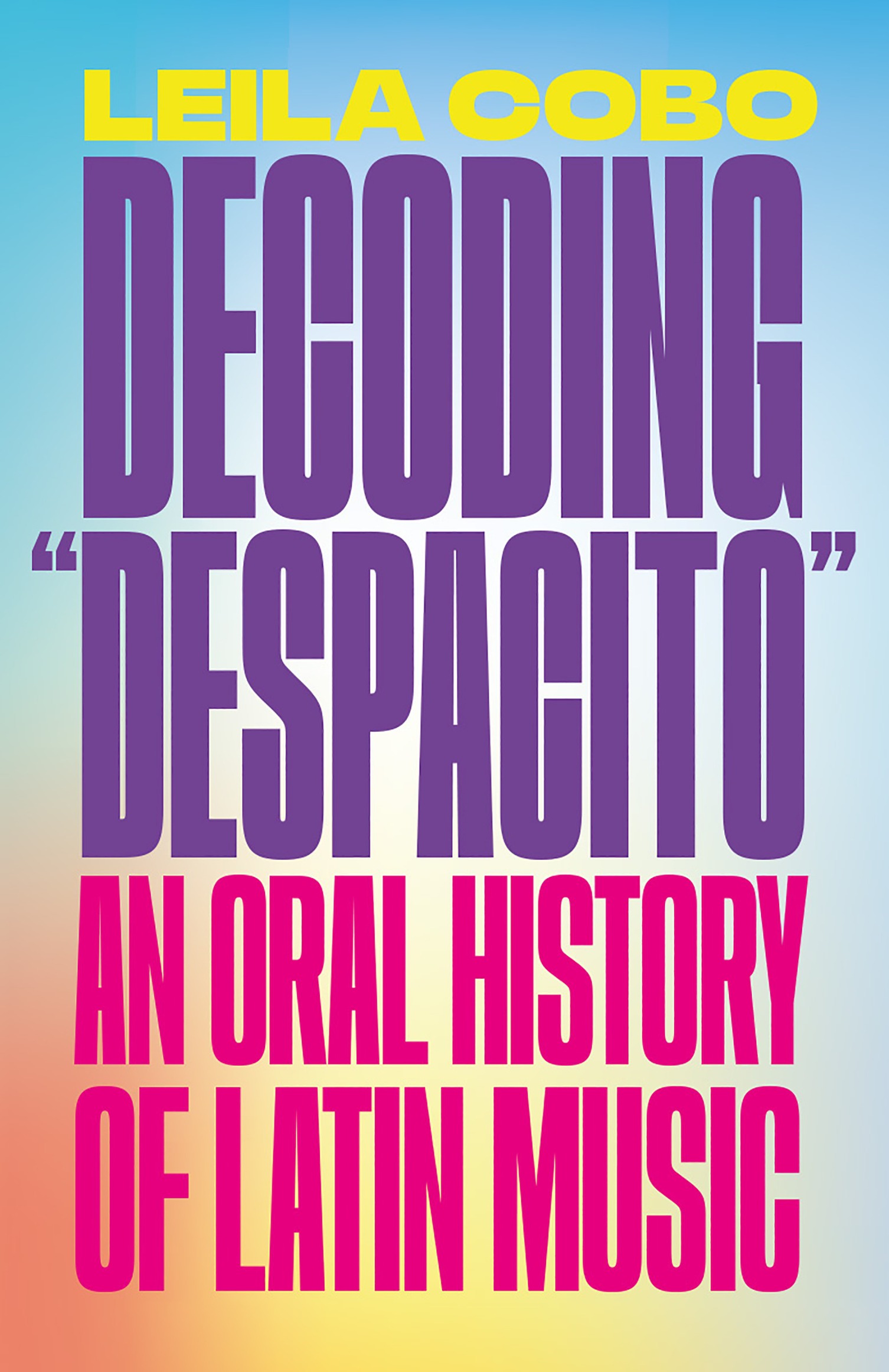

Born in Cali, Colombia, Leila Cobo is the vice president and Latin industry lead at Billboard and heads the Billboard Latin Music Conference. She has published two novels and three books about Latin music, including a top-selling biography of the late Jenni Rivera.
www.leilacobo.com
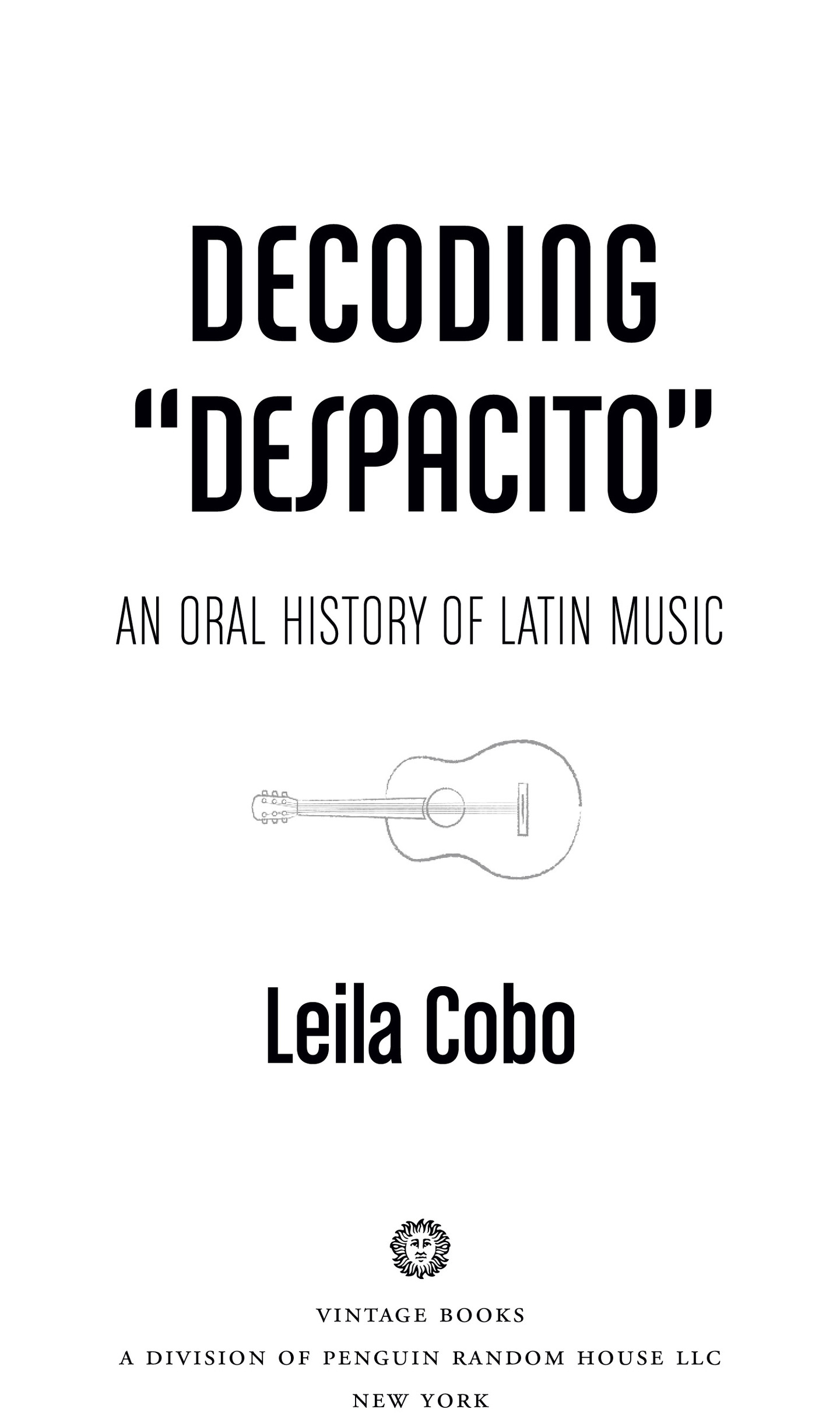
A VINTAGE BOOKS ORIGINAL, MARCH 2021
Copyright 2021 by Leila Cobo-Hanlon
All rights reserved. Published in the United States by Vintage Books, a division of Penguin Random House LLC, New York, and distributed in Canada by Penguin Random House Canada Limited, Toronto.
Simultaneously published in Spanish in paperback as La Frmula Despacito by Vintage Espaol, a division of Penguin Random House LLC, New York.
Vintage and colophon are registered trademarks of Penguin Random House LLC.
constitutes an extension of this copyright page.
Library of Congress Cataloging-in-Publication Data
Names: Cobo, Leila, author.
Title: Decoding Despacito : an oral history of Latin music / Leila Cobo.
Description: New York : Vintage Books, 2020.
Identifiers: LCCN 2020942283 (print)
LC record available at https://lccn.loc.gov/2020942283
Vintage Books Trade Paperback ISBN9780593081334
Ebook ISBN9780593081341
Author photograph Natalia Aguilera
Illustrations Maria Ticce/Shutterstock
Cover design by Isabel Urbina Pea
www.vintagebooks.com
ep_prh_5.6.1_c0_r0
The man that hath no music in himself,
Nor is not moved with concord of sweet sounds,
Is fit for treasons, stratagems and spoils;
The motions of his spirit are dull as night
And his affections dark as Erebus:
Let no such man be trusted. Mark the music.
William Shakespeare, The Merchant of Venice, act 5, scene 1
The article in Billboard magazine read like so many pieces about Latin acts who achieve international renown. The artist had been discovered and pushed by the companys Latin American chief, but had become so successful that he was no longer going to merely release songs in Latin American countries. He would now be groomed for a major release for the mainstream market.
We could be speaking about Rosala in 2019. Or Ricky Martin in 1999.
But this was Cuban bandleader Dmaso Prez Prado, whose big band played mambo and other Latin rhythms. And the year was 1950.
The pianist and arranger, who, as the Billboard story said, cuts in Mexico, had been RCA Victors top Latin American seller for the past decade before the label decided to switch him from the international series to its pop label; meaning Prez Prado was being taken from the Latin market and moved into the mainstream.
By then, hed already made an impact with his Que rico el mambo, now considered a Latin standard, which he had rereleased as Mambo Jambo for the American market.
But it was after that label switch in 1950 that his popularity exploded, in tandem with the globalization of mambo. By 1955, Prez Prados version of Cherry Pink and Apple Blossom White, which was used as the theme for the Jane Russell film Underwater!, spent ten weeks at #1 on the Billboard pop charts, making it one of the biggest instrumental hits of all time.
The story of Cherry Pink and Apple Blossom White is one of great music built on quintessential Latin beats, of a fascinating bandleader and pianist, and of a groundbreaking moment not just for Latin music but for music and culture as a whole. The 1950s were about far more than Prez Prado. The decade saw Nat King Cole sing in Spanish, the rise of Afro Cuban jazz, and the advent of the biggest triumph of Latin culture in Middle America: I Love Lucy, featuring Desi Arnaz, the real-life Cuban bandleader (and Lucille Balls real-life husband) who played Lucys endearing Cuban bandleader husband on TV.
It took more than seven decades to come full circle, to 2017, when Despacito, another great track built on quintessential Latin beats, hit #1 on the Billboard Hot 100 and stayed there for sixteen straight weeks, a record at the time.
And Despacito highlighted a flood of Latin songs that came before and after, hits that found unprecedented global exposure, thanks to the rise of streaming services in an ever-shrinking world.
As of 2020, Latin music is the largest-growing genre of music in the world. Once considered the realm of romantic ballads and folk songs, it has blossomed to incorporate a dizzying array of subgenres, voices, nationalities, rhythms, syncopations, and styles big and small. It is sung in Spanish and in English and in both. It is inescapable.
But its been a long road since the days of Prez Prado.
In those seven decades, Latin music continued to seep into the fabric of popular culture, even as its popularity beyond the confines of Latin America and Spain ebbed and flowed, sometimes way below the surface of the mainstream, sometimes spectacularly above.
But even in the seemingly quiet years, when not a single conga or heart-wrenching ballad made it to non-Latin ears, Latin musicthe term broadly applied to music sung predominantly in Spanish, regardless of originthrived. Supported by an ever-growing diaspora that refused to let go of the beats and sounds of their homelands, the music and its reach expanded relentlessly. The number of radio stations devoted to Spanish music grew, as did concerts and album sales. In the late 1980s, when I came to this country, Middle America might not have known the names Vicente Fernndez, Luis Miguel, or Juan Luis Guerra, but all were selling out Madison Square Garden.
When I began working at Billboard in 2000 as the music brands head of Latin music, the genre was experiencing a new renaissance: the so-called Latin Explosion led by Ricky Martin, Shakira, Marc Anthony, and Enrique Iglesias, among many others.
My timing couldnt have been better. I was Colombian, born and raised, but had come to the United States to study classical piano performance at Manhattan School of Music. After I graduated, I decided to pursue my other passion, media and journalism. I applied for a Fulbright scholarship and obtained a masters degree from the Annenberg School for Communication and Journalism at the University of Southern California. There had to be a way, I thought, to bring together music and journalism, music and media, my Latin background with my formal music training. It all meshed when I landed a job as the pop music critic for the Miami Herald. When the Billboard spot opened up in 2000, the time was ripe for Latin music to come into its own.
The seeds had already been sown. In the mid-1990s, Gloria Estefan and the Miami Sound Machine awakened the world to the beat of the conga with music that was in English but had as its foundation aggressive Latin beats, a metaphor for a blending of cultures. It was, as Emilio Estefan famously once said, rice and beans with hamburger. At the same time, the ultimate Latin symbolthe sexy croonerhad made its way into every living room in America, thanks to Julio Iglesiass and Willie Nelsons To All the Girls Ive Loved Before. Who knew Latin and country music could mesh?
Font size:
Interval:
Bookmark:
Similar books «Decoding Despacito: An Oral History of Latin Music»
Look at similar books to Decoding Despacito: An Oral History of Latin Music. We have selected literature similar in name and meaning in the hope of providing readers with more options to find new, interesting, not yet read works.
Discussion, reviews of the book Decoding Despacito: An Oral History of Latin Music and just readers' own opinions. Leave your comments, write what you think about the work, its meaning or the main characters. Specify what exactly you liked and what you didn't like, and why you think so.

